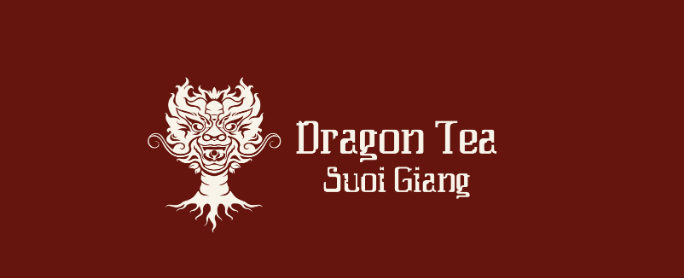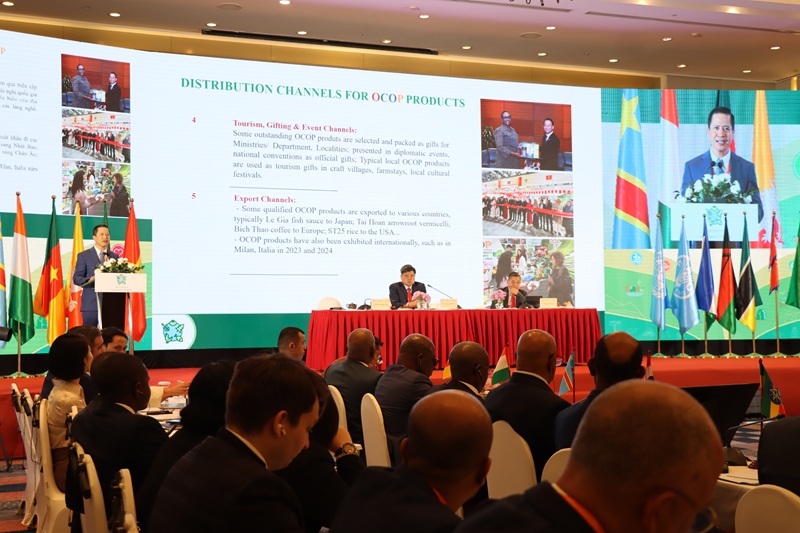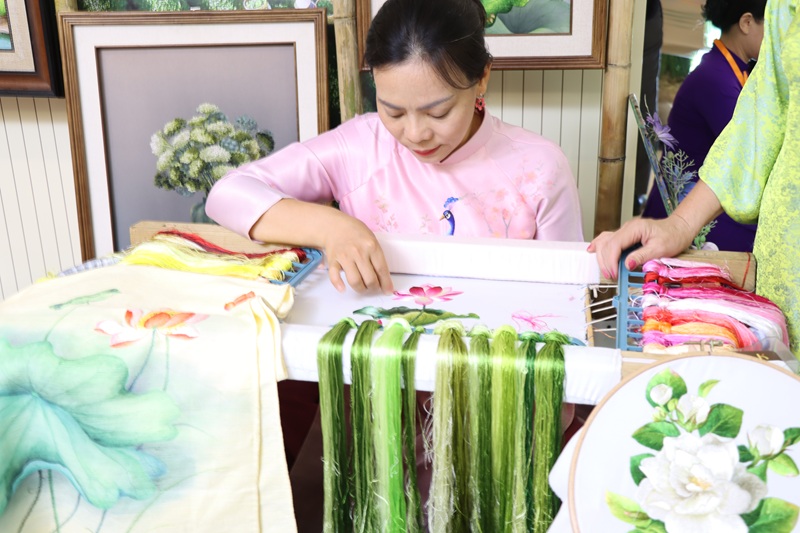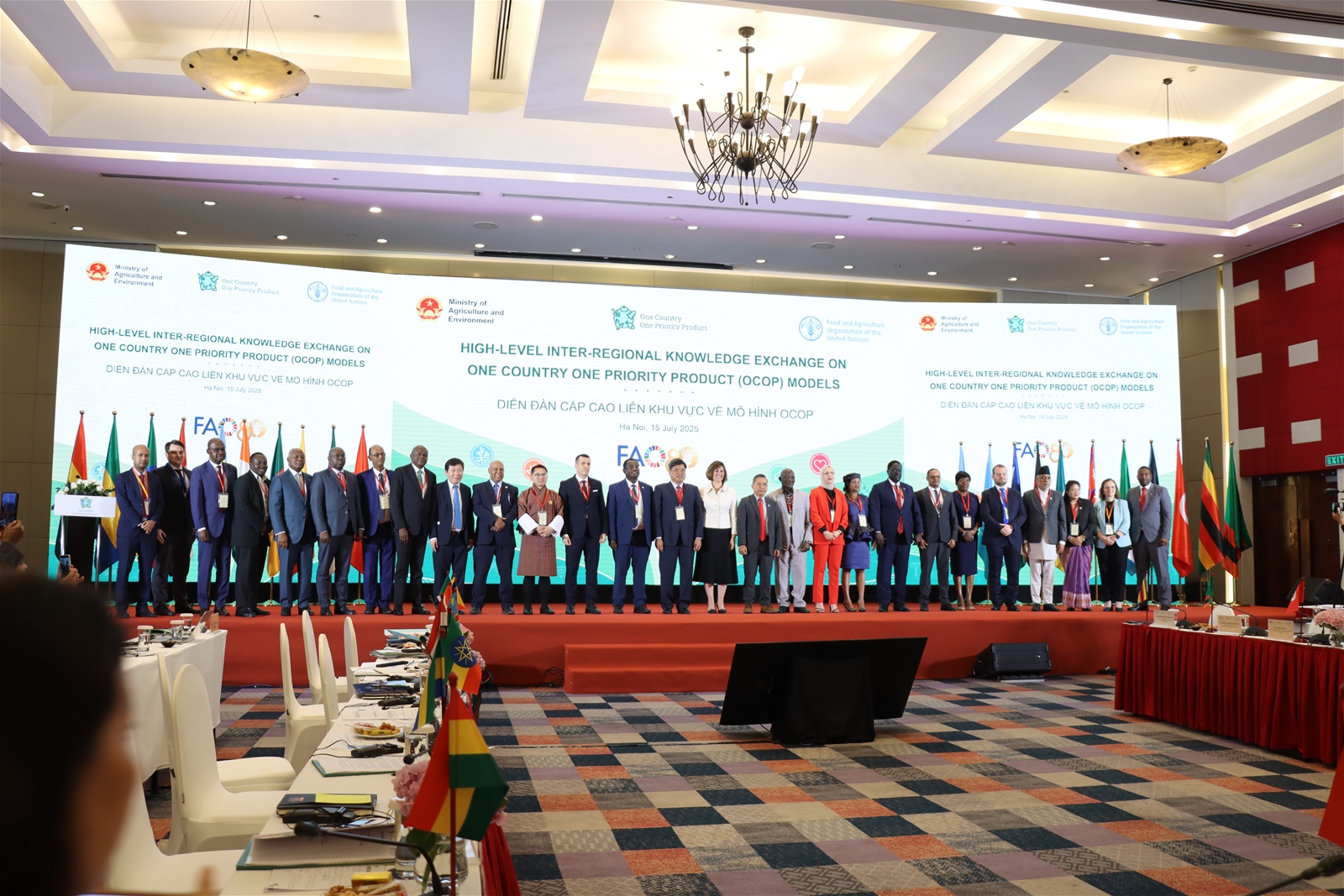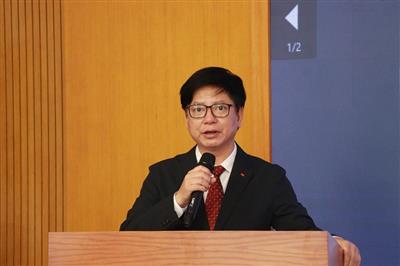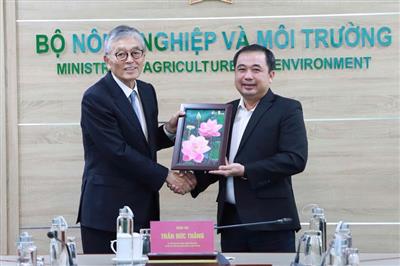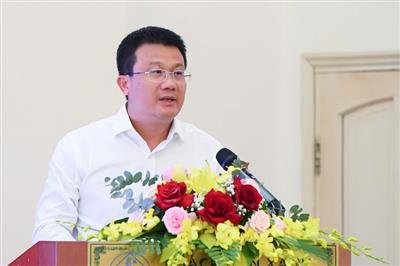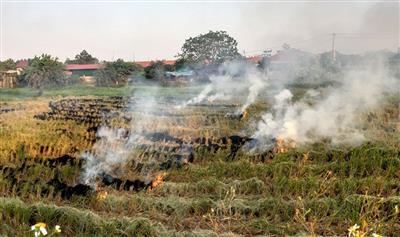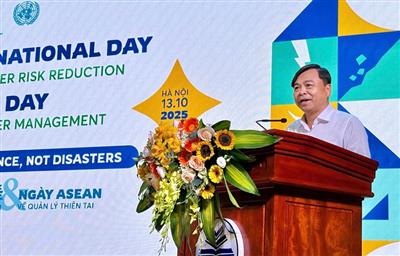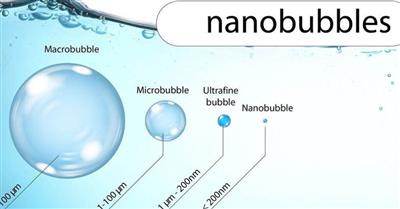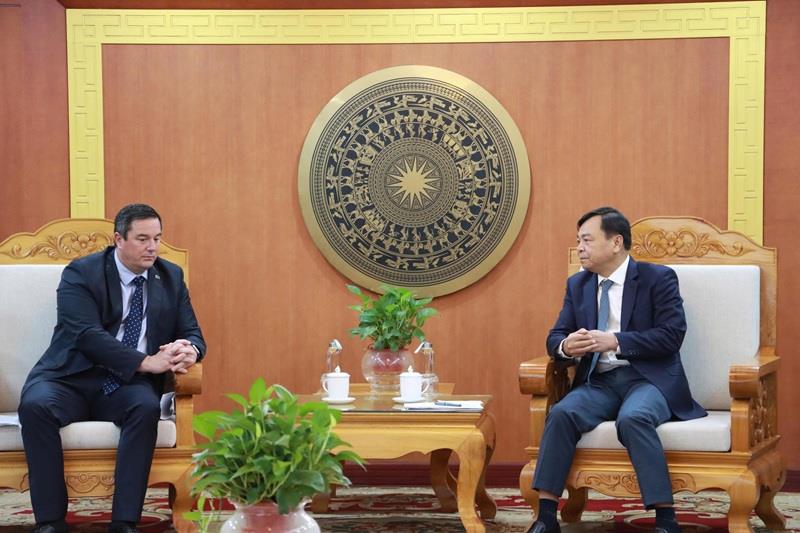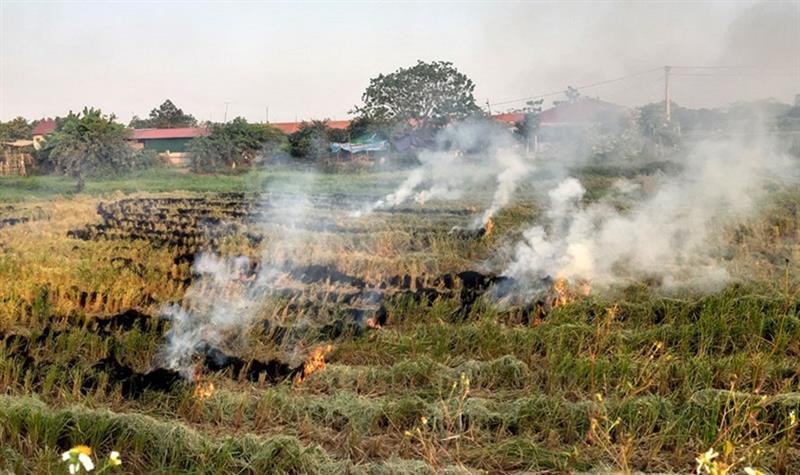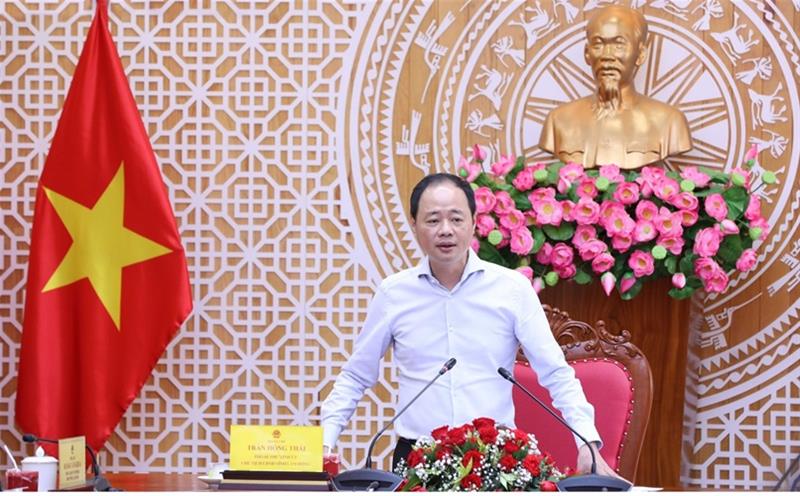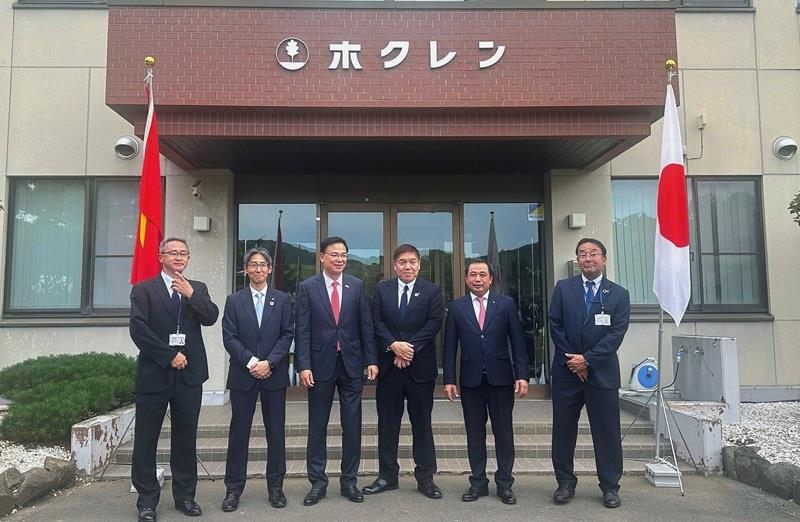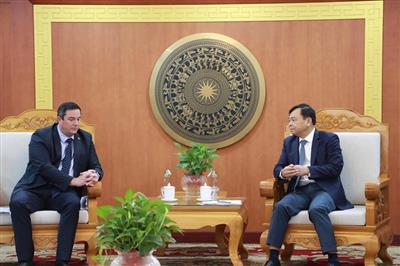
OCOP - A Vietnamese model for modern rural development: Bridging indigenous values with global markets
21/07/2025TN&MTAs countries around the world strive to restructure their economies toward green, circular, and inclusive growth, unlocking the potential of rural areas, through local resources, traditional knowledge, and community-based innovation—has emerged as a strategic pathway to ensure sustainable development, social stability, and cultural preservation. In Vietnam, the "One Commune One Product" (OCOP) Program has demonstrated remarkable effectiveness over the past seven years. Beyond promoting rural production along value chains, OCOP has fundamentally transformed grassroots thinking about socio-economic development, laying the foundation for an autonomous, modern, and globally connected rural economy.
More than a national initiative, Vietnam’s OCOP program is increasingly viewed as a case study of international interest. In his opening remarks at the High-Level Inter-regional knowledge exchange on OCOP models, held in Hanoi from July 15 to 16, 2025, Deputy Minister of Agriculture and Environment Tran Thanh Nam emphasized: “OCOP offers a strategic solution to the challenge of building a modern, sustainable, inclusive, and humane rural development model.”
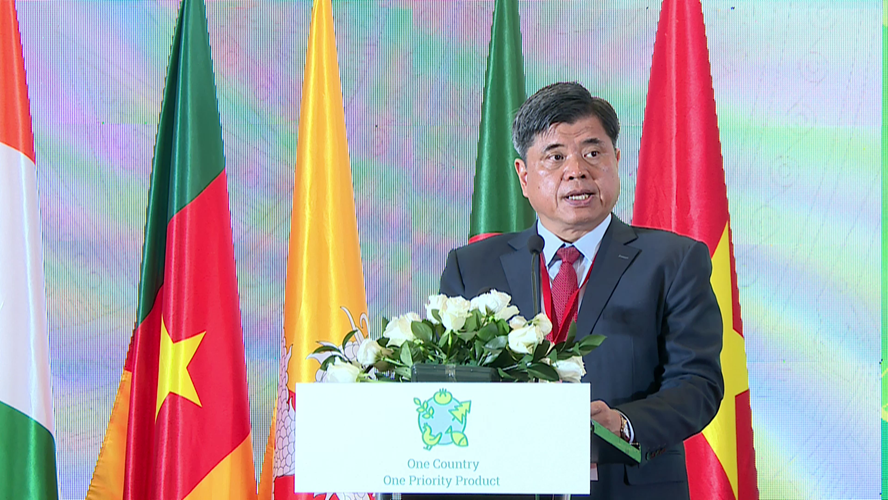
Deputy Minister Tran Thanh Nam delivering opening speech at at the High-Level Inter-regional knowledge exchange on OCOP models
According to Deputy Minister Tran Thanh Nam, OCOP is not merely a program for supporting local specialty products. Rather, it represents a comprehensive model that converts endogenous potential into green economic value, through innovation, value chain standardization, and market connectivity. This approach is particularly relevant to Vietnam’s ongoing efforts to restructure its agricultural sector and advance the enhanced New Rural Development Program.
Deputy Minister Tran Thanh Nam also called on the international community, under the leadership of the Food and Agriculture Organization of the United Nations (FAO), to co-develop a global OCOP ecosystem, one that harnesses the power of community, fosters social inclusion, and contributes to achieving FAO’s four “Better” goals: better production, better nutrition, a better environment, and a better life.
Vietnam’s strategic vision for OCOP
As early as 2010, through the issuance of Decision No. 800/QĐ-TTg approving the National Target Program on New Rural Development, Vietnam laid out a comprehensive vision for rural transformation, not merely through infrastructure investment, but by promoting economic, cultural, and social development in an integrated manner. Building on this foundation, the OCOP (One Commune One Product) program was launched in 2018 as a critical pillar during the transition from the “development” to the “enhancement” phase of rural modernization, with the aim of fostering rural economies based on comparative advantages and indigenous knowledge.
Decision No. 490/QĐ-TTg (2018), which approved the National OCOP Program, marked the official beginning of this journey in Vietnam. In 2022, Decision No. 919/QĐ-TTg further revised, expanded, and specified the OCOP roadmap for the 2021–2025 period. Together, these legal documents have established a comprehensive policy framework that enables the implementation of OCOP at both central and local levels.
Most notably, on July 6, 2025, the Prime Minister issued Decision No. 1489/QĐ-TTg introducing a pilot two-tier evaluation model for OCOP, replacing the previous three-tier system. Under this new mechanism, product classification is conducted only at the provincial and central levels, rather than at commune, district, and provincial levels as before, streamlining procedures, enhancing transparency, and aligning with Vietnam’s evolving decentralized administrative structure.
This reform reflects the Vietnamese Government’s dynamic and adaptive approach: OCOP is not seen as a static model, but as an evolving development process, constantly updated, adjusted, and improved to respond to local realities and market demands. From a consistent policy framework, OCOP has scaled into a nationwide movement, catalyzing rural economic transformation and generating synergistic impacts across regions.
In the first such inter-continental dialogue, ministers and top-level agriculture policymakers from 14 countries in Africa, and 3 in Asia, met in the Vietnamese capital to discuss challenges and opportunities to making farming productive, resilient, sustainable and profitable for smallholders, the main agrifood producers
It is no coincidence that OCOP has been recognized as a key economic driver in Vietnam’s enhanced New Rural Development agenda. According to Deputy Minister Tran Thanh Nam, the program is anchored on three strategic pillars: empowering community-based economic development rooted in local resources, enhancing product value through value chains, and building brands associated with regional cultural identities.
OCOP has redefined the value of rural resources. Land, traditional knowledge, local specialties, and handicrafts are no longer viewed as static comparative advantages, but rather as dynamic economic assets, activated through innovation, production, market linkages, and standardization according to market demands. This transformation enables OCOP to serve as a powerful tool for restructuring Vietnam’s rural economy toward modernity, sustainability, and multi-dimensional value creation.
OCOP also extends beyond agriculture to include herbal medicines, beverages, handicrafts, ornamental plants, and community-based tourism, expanding development opportunities for rural areas and creating diverse, sustainable livelihoods for local communities.
As Deputy Minister Tran Thanh Nam highlighted, the distinctiveness of OCOP lies in its community-centered, people-led approach, with a strong focus on supporting vulnerable groups such as women, ethnic minorities, the elderly, small cooperatives, and household producers.
OCOP also serves as a grassroots incubator for rural innovation, where entrepreneurial ideas are tested, scaled, and linked to markets. From improving production processes, packaging design, and brand storytelling to embracing e-commerce and livestream sales, OCOP producers are steadily enhancing their management capacity. In doing so, they are contributing to the emergence of a new generation of rural entrepreneurs who are confidently participating in Vietnam’s evolving market economy.
Achievements after 7 years of implementation
After more than 7 years of nationwide implementation, the OCOP program has gradually proven its sustainable, far-reaching, and holistic impact as a rural economic development policy grounded in community-driven potential. More than just generating tens of thousands of unique local products, OCOP has fundamentally transformed rural production mindsets, laying the foundation for a multi-value, inclusive, and globally connected rural economy.
Steady growth and product standardization
As of mid-2025, over 16,800 products have been certified as OCOP across 63 provinces and cities, developed by approximately 9,000 producers. Of these, more than 70% have achieved a rating of three stars or higher, signaling not only increased quantity but also improved quality and market credibility. Product evaluation is based on a rigorous set of criteria covering raw material origin, production processes, packaging design, traceability, and intellectual property.
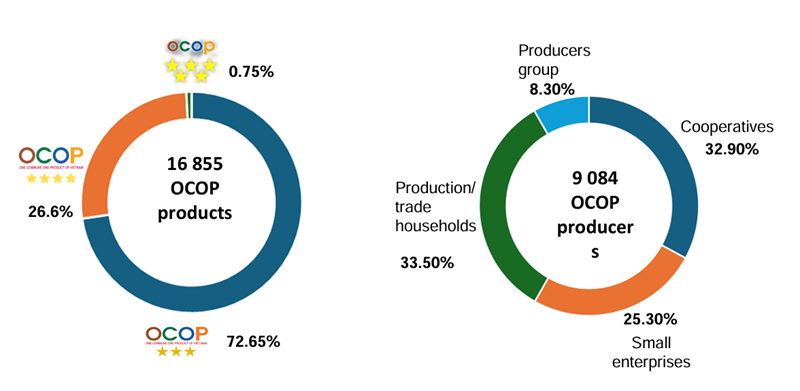
Many OCOP products have successfully penetrated international markets, strengthening the reputation of Vietnamese brands in high-potential sectors such as tea, coffee, handicrafts, and processed agricultural goods. Notably, five-star national products have reached demanding markets such as Japan, the United States, South Korea, and Europe. According to statistics, annual revenue from OCOP products has grown by 12–18% on average, contributing significantly to household incomes and local government budgets.
OCOP is not just a story about products; it is a story about endogenous strength, how people in remote areas have harnessed their cultural identity, knowledge, and available resources to create real economic value.
Tran Thanh Nam, Deputy Minister of Agriculture and Environment of Viet Nam, at the High-Level Inter-regional Knowledge Exchange on OCOP models
The commercial success of OCOP shows its evolution from a community development initiative into a powerful engine for restructuring the rural economy toward modernization, sustainability, and global integration.
Transforming production mindsets and empowering local actors
One of OCOP’s most profound impacts has been the transformation in how rural producers think and operate. From fragmented, subsistence-based production, households, cooperatives, and small businesses have adopted value chain thinking, focusing on market orientation, packaging, branding, and intellectual property. This marks a critical shift from mere production to holistic rural economic development.
Currently, OCOP producers include approximately 32% cooperatives, 25% small and medium-sized enterprises, 33% individual households, and the remainder made up of community groups and alliances. These actors are not only producing goods but also learning to tell their brand stories, protect the environment, access financing, and apply digital tools in marketing and distribution. Over 70,000 OCOP stakeholders have undergone structured training in production management, market access, quality standards, and brand development.
Deputy Minister Trann Thanh Nam noted: “Today, rural people are not just producers; they are brand storytellers, digital marketers, and livestream sellers. This is OCOP’s greatest success, changing the mindset of rural development.”
This transformation has not only improved product quality but also nurtured a new generation of rural entrepreneurs, knowledgeable, strategic, and capable of market integration, who are becoming key drivers of local economic growth.
Shaping a multi-value rural economic ecosystem
OCOP is doing more than boosting production, it is helping to shape a new economic ecosystem in rural areas, where agriculture, culture, and tourism intersect and reinforce one another. The program has played a key role in the development of community-based tourism, eco-tourism, and experiential tourism linked to indigenous products.
To date, Vietnam has established over 400 rural tourism destinations, with more than 200 OCOP products designed for visitors. These activities not only generate new income streams for local residents but also contribute to the preservation of cultural heritage, traditional crafts, and rural landscapes. OCOP products in handicrafts, brocade weaving, wood and ceramic carving, bamboo and rattan goods, and regional cuisine have become cultural highlights that attract tourists and generate high added value.
In his opening remarks at the event, Deputy Minister Tran Thanh Nam reflected: “This morning, you enjoyed a traditional cultural performance by OCOP artisans. That performance is a clear example of how we are integrating culture, tourism, and agriculture into a layered, multi-value rural economic ecosystem.”
The integration of OCOP products with tourism services not only opens up new development pathways for rural areas but also demonstrates the program’s commitment to a green, circular, and sustainable economic approach.
Promoting inclusive development and community innovation
OCOP has proven the power of a community-based development model by generating tens of thousands of new jobs, many of them for women, the elderly, and ethnic minorities. These vulnerable groups, often left behind in conventional development processes, have emerged as active, creative contributors to production, commerce, and cultural preservation.
According to data from the Ministry of Agriculture and Environment, over 40% of OCOP producers are women, and 17% are ethnic minorities. In addition, the program aims to facilitate participation of persons with disabilities and the elderly in OCOP value chains through tailored technical and financial support mechanisms.

At the event, Deputy Minister Tran Thanh Nam stated: “OCOP is truly becoming an inclusive development program, sparking creativity among the most vulnerable. They are not only making products, but also bringing hope and transformation to their communities.”
Beyond employment generation, OCOP fosters a culture of grassroots innovation, laying a solid foundation for endogenous development and stimulating rural entrepreneurship rooted in local identity.
OCOP in Vietnam’s strategy for sustainable agriculture and global integration
As the global economy undergoes profound transformation toward a greener, more digital, and inclusive model, OCOP is emerging as a vital component in Vietnam’s strategy for sustainable agriculture and enhanced international competitiveness. No longer limited to supporting local products, OCOP is being repositioned as a holistic solution to rural economic transformation, aligning agricultural growth with global standards, green value chains, and community-driven innovation ecosystems.
Speaking at the High-Level Interregional knowledge exchange on OCOP models, Deputy Minister Tran Thanh Nam emphasized: “OCOP is a strategic driver for restructuring the rural economy, from fragmented, small-scale production to a green, multi-value model capable of global integration. This transformation is essential for Vietnam to achieve the goals of sustainability, prosperity, and human-centered development.”
OCOP has proven the power of a community-based development model by generating tens of thousands of new jobs—many of them for women, the elderly, and ethnic minorities
With the aim of enhancing quality and added value, the program now focuses on developing OCOP products linked to standardized raw material areas, clean production practices, organic agriculture, and advanced processing technologies. Product standards are increasingly aligned with international benchmarks such as Codex, GlobalG.A.P., FDA regulations, and European green criteria, while meeting consumer demands for safety, transparency, and traceability.
An important direction set by the Government and the Ministry of Agriculture and Environment is the integration of OCOP into rural, ecological, and community-based tourism. Hundreds of OCOP-related tourist destinations have already been developed, expanding market access, enhancing service value chains, and promoting local cultures.
OCOP cannot be separated from rural cultural and tourism spaces. We must build OCOP as an open ecosystem, with tourism as the bridge between products and markets
Tran Thanh Nam, Deputy Minister of Agriculture and Environment of Viet Nam, at the High-Level Inter-regional Knowledge Exchange on OCOP models
In addition to growing the domestic market, Vietnam is actively promoting international trade for OCOP products. In partnership with FAO, UNDP, major supermarket chains, and global e-commerce platforms, many OCOP products have entered international markets such as Europe, Japan, and the United States. This highlights the increasing global competitiveness of Vietnamese OCOP products, particularly those tied to cultural narratives and green development principles.
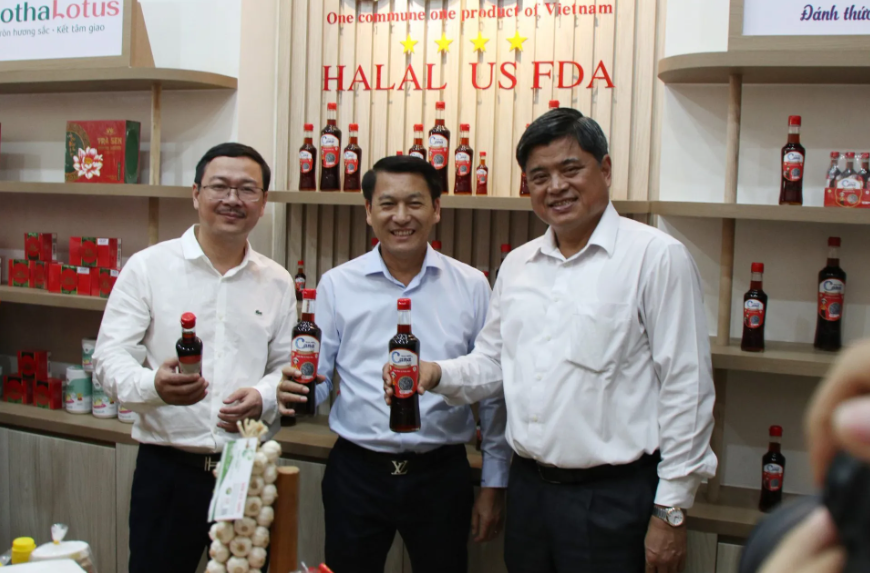
Deputy Minister Tran Thanh Nam and delegates visited the OCOP product exhibition booth at the Forum on 'Developing agricultural and rural tourism in association with local specialties and OCOP products' held on September 22, 2023.
Looking ahead to 2030, OCOP is set to become a pillar of Vietnam’s three-pronged strategy: green agriculture, prosperous rural communities, and modern farmers. According to Deputy Minister Tran Thanh Nam, Vietnam and FAO are jointly advancing the “Global OCOP Connectivity” initiative to share best practices, elevate standards, and expand markets for countries with similar models. “We envision OCOP as a global ecosystem for agriculture without poverty, where no one is left behind,” he stated.
Thus, OCOP is no longer just a Vietnamese initiative but part of a broader global trend, where rural development is driven by green values, cultural identity, and community innovation. In Vietnam’s national agricultural strategy, OCOP functions as a “soft coordination mechanism” linking policies, markets, and people, facilitating the shift toward a high-quality, distinctive, and resilient agricultural future.
Policy improvement and development orientation for the 2025–2030 period
As Vietnam enters a new development phase, the OCOP program must undergo significant transformation, both in policy and implementation, to meet growing market demands and align with international integration trends. The Vietnamese Government has made it clear: OCOP is no longer just a targeted initiative but should be institutionalized as a strategic pillar in the comprehensive and modern development of agriculture and rural areas.
One of the most notable policy reforms is the Ministry of Agriculture and Environment’s new guideline to implement OCOP through a two-tier model, replacing the previously fragmented administrative approach. Under this model, provincial authorities are responsible for managing and certifying product quality, while district-level governments focus on supporting communities to develop ideas, complete documentation, establish standardized raw material zones, and connect with markets. This new mechanism is expected to resolve bottlenecks in local implementation capacity while enhancing flexibility and adaptability across diverse regions.
To ensure OCOP’s sustainable development, appropriate institutional frameworks must come first. There cannot be strong products if local governments remain passive, and producers lack access to information, technical support, or markets. Therefore, policy must stay one step ahead—to create space for innovation and development.
Tran Thanh Nam, Deputy Minister of Agriculture and Environment of Viet Nam, at the High-Level Inter-regional Knowledge Exchange on OCOP models
For the 2025–2030 period, OCOP is strategically oriented along three main axes: (1) Improving product quality and standardizing raw material areas; (2) Integrating OCOP with digital transformation and the green economy; (3) Promoting international integration and expanding market access. Local governments will be encouraged to develop certified raw material zones, foster organic farming, and adopt digital technologies for production management, traceability, and brand development.
In parallel, OCOP will continue to be integrated with national target programs such as New Rural Development and Sustainable Poverty Reduction. Each new rural commune and district is expected to establish at least one OCOP product cluster rated three stars or higher, closely tied to the region’s cultural and tourism landscape. This represents a new model of integrated rural development, where production, services, and cultural identity are simultaneously cultivated within a single ecosystem.
Financial mechanisms will also be strengthened to improve OCOP’s access to preferential credit, innovation funds, and e-commerce platforms. The Ministry of Agriculture and Environment is working with international partners such as FAO, UNDP, and development agencies to build a Global OCOP Network that promotes knowledge-sharing, strengthens product evaluation capacity, and supports international market access for Vietnamese OCOP producers.
“OCOP in the coming phase must be globally connected, green, and digitally empowered. These are the three pillars that will carry rural Vietnam into an era of sustainable, innovative, and prosperous development,” Deputy Minister Nam stressed.
With continued support from the State, active engagement by local governments, and the spirit of innovation from communities, OCOP from 2025 to 2030 is poised to remain a groundbreaking program in Vietnam’s agricultural and rural development strategy, where every citizen is not only a producer, but also an innovator, entrepreneur, and cultural ambassador for their homeland.
From Vietnam’s OCOP to global connectivity
After 7 years of implementation, the OCOP program has affirmed its position as a distinctive Vietnamese model for agricultural modernization, rural development, and local economic growth rooted in sustainability. With over 16,800 certified products and thousands of producers empowered in production, marketing, and branding, OCOP is no longer just a domestic success, it is becoming a globally relevant policy model.
Agriculture ministers and senior officials from Bhutan, Cameroon, Cote d‘Ivoire, Democratic Republic of the Congo, Gabon, Ghana, Ethiopia, Lesotho, Malawi, Mozambique, Nepal, Sierra Leone, South Sudan, Tunisia, Viet Nam, Zambia and Zimbabwe attended the 15-16 July 2025 High-Level Inter-regional Knowledge Exchange on One Country One Priority Product (OCOP) Models
OCOP demonstrates a crucial development principle: effective rural transformation does not always require large capital or advanced technologies, it begins with deep local knowledge and enabling policies that unlock the potential within communities. This approach has sparked a grassroots wave of creativity, revitalized agricultural value chains, traditional crafts, and community tourism, and significantly contributed to Vietnam’s commitment to the Sustainable Development Goals (SDGs).
More importantly, OCOP is steadily expanding its global reach through international cooperation, participation in exhibitions, trade fairs, and the emerging Global OCOP Network under FAO’s coordination. At the High-Level Interregional Forum on OCOP, Deputy Minister Tran Thanh Nam made a powerful call to action: “We must work together to build a global OCOP ecosystem, where each product carries not only cultural and economic value, but also contributes to livelihoods, environmental protection, and quality of life for millions of rural people worldwide.”
What began as an initiative under Vietnam’s National Target Program on New Rural Development has grown into a long-term strategy and a powerful endogenous driver of rural economic transformation. In the 2025–2030 period, as the world accelerates the shift toward a green economy, circular development, and digital transformation, OCOP is well-positioned to become a global bridge, connecting rural communities to international markets not only through products but through their identity, knowledge, and aspiration for growth.
From Vietnam, OCOP proves that community-based potential, when properly unlocked, can become an unlimited engine for development. And in this age of integration, that is the message Vietnam proudly shares with the world: “Start from the village, from the commune, the smallest places with the greatest potential.”
Ngoc Huyen

